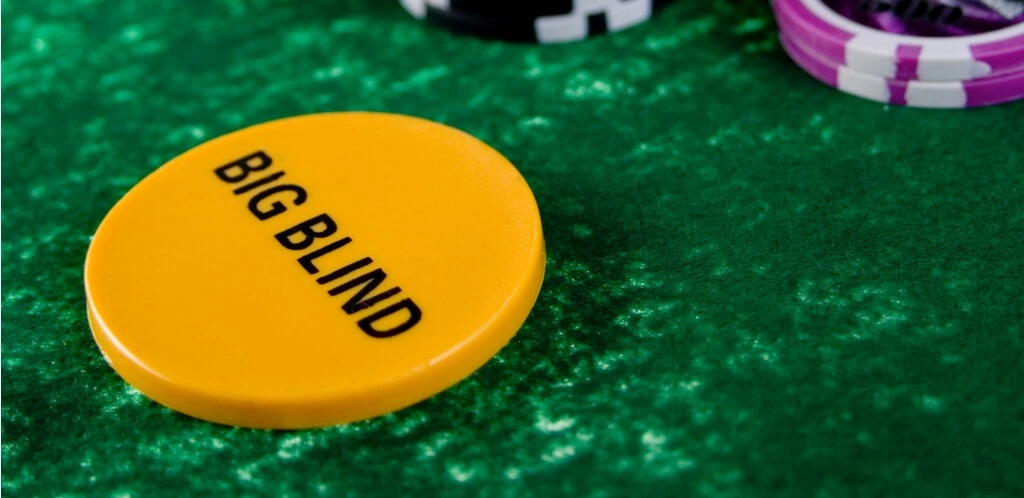Playing against a Limp in Blind Vs Blind Pots – Everything You Need to Know
Not too long ago, almost all players used to raise or fold their small-blind in online cash games. Nowadays you can see some pretty big winners at high stakes utilize a mixed strategy or a pure limping strategy from the small-blind (SB).
To take advantage of this change in the meta-game, it’s essential to understand the different ways you can react to poker players limping from the big-blind (BB).
In this article, we’re covering different points of view on blind vs blind (BvB) play from the Big Blind against a limp. While these spots might be rare in micro stakes, it’s a quite common scenario when you move up to small, mid and high stakes games.
Let’s start with the pre-flop decisions:
How to play preflop in BvB pots against good players who limp
The first factor you should consider here is what type of player you’re facing.
Your approach should be a very different one against good, balanced players compared to weak ones.
If you’re playing against a competent player who limps with a reasonably balanced range from the SB and limp-3-bets a decent portion against your raise, you should raise around 40% of your starting hands. The worst hands to raise in this spot are hands like weak Aces, low gapped suited connectors, suited Kings and Queens like K5s and Q7s and offsuit hands like JQo.
Some players like to raise up to 4BB in this spot, while others go for around 3-3.5 BBs. You don’t want to go too low to give them odds to call with any hands they might have limped with. Risking over 4 BBs against good players might result in them limp-3-betting more aggressively which is something we don’t want. We recommend using 3.5BB or 4BB as your standard sizing here.
Now if you face a three-bet from a good player here, you’re guaranteed to have position postflop which allows you to defend a somewhat wide selection of hands. You should defend with pairs, almost all suited connectors and most broadway hands. Against super aggro opponents postflop who are firing multiple barrels on most boards whether they hit it or not, you can start to drop your weakest defends.
How to play preflop in BvB pots against weak players who limp
Now we get to the fun part in poker: playing exploitatively against a weak player! You can widen your raising range up to 55% or even 60% of hands, depending on how bad your opponent is.
If you happen to face limp-3-bet here, you should have a somewhat easy decision. Either the opponent is a maniac who just spazzes with any2, or he is a timid passive player who always has a premium pair with this betting line. In the latter case, you can fold pretty much everything. In the first case, defend with a good chunk of your raising range and prepare to win a big pot!
The preflop decisions are not that complicated as long as you keep an eye on the tendencies of your opponents to label them correctly.
Strategy adjustments postflop
In most cases where you get called, you have around 40-60% of your starting hands in your range on the flop. C-betting a lot makes sense here as you have an uncapped preflop range and can cover almost all boards. Make sure to slow down a bit on some boards that hit SB’s calling range hard, such as 7d5s4s or 8h7d6c.
Which sizing should you pick for c-betting in this spot? Our advice is simple: Against good players, use a smaller sizing with your whole range (1/3 – ½ pot depending on the board texture). Against bad players, use multiple sizings with larger sizings more geared towards big value hands and good draws. This way you get the most out of your good hands against bad players and disguise your hand against good players who read hands well.
Checking behind some hands with showdown value is never a bad idea. If your opponent doesn’t stab much against check-backs, you should be more inclined to bet these mediocre hands. You can get some thin value and prevent your villain from realizing his equity.
Conclusion
Next time you’re playing BvB against a limp, you’ll know how to go about it against both tough and weak opponents. Just keep in mind that most players simply fail to use any decent strategy from their SB and you can punish them for that by raising a wide range against them. You’ll likely see a lot of mistakes from them postflop as well. After all, they’re playing out of position and usually with a capped range. Apply the tips in this article and your bottom line will thank you later!
If you’re just starting out in poker, you should use basic strategy resources like this cheat sheet for playing poker from BeastsOfPoker. After you have a good grasp on basic ranges and postflop play, it makes more sense to study specific scenarios like Blind vs Blind (BvB) play.



